Last week I posted about collections without themes. This week it is time collections with themes that my Quirky Berkeley travels have led me to.
I know you want to know this – I have had collections over the years. They include:
1) Cicada shells. This probably shouldn’t count, but our neighborhood gang In Pennsylvania collected them in big jars. We also collected honeysuckle but we ate that collection.
2) Stamps. For a few years when I was in fourth fifth sixth grade my father got me started on collecting American stamps. I made lists of what I wanted to buy. I saved money. My father took me on the train to downtown Philadelphia and we went to the stamp store. That was the best part, doing it with my father.
3) Flat toy soldiers and toy soldiers. I played with them all so maybe they weren’t really collections. Again, that was a trip into Philadelphia with my father, a good thing.
4) First book collection, consisting of 19th century American fiction, Tarzan first editions, Nero Wolfe first editions, and the Travis McGee series by John MacDonald. When my parents moved to California this wonderful collection went to the Bryn Mawr College thrift shop.
5) Farm Worker postcards. In my late twenties working with the United Farm Workers I started collecting antique postcards depicting farm workers. I scoured antique stores and postcard shows. It was an incredible collection I gave it to Cesar when I left the Union.
6) United Farm Worker buttons. I had a top-five collection. I still have it. I don’t know what I will do with it. For a few years I had it displayed in shadow boxes. Now the collection is in a cardboard box. You can see the buttons here.
7) Second book collection. In 1982 I started reading through slang dictionaries, looking for clever and perfect words and phrases to use in the Great American Novel that I was writing about my years in the United Farm Workers. At some point my focus shifted form the writing to the collecting and I became a serious collector of slang books. I believe that my collection of slang dictionaries, books about slang, and books with slang appendices is the second most complete in the world, better than any library. Pictured above is the slang library several years ago. The photo shows a fraction of the entire collection.
The point being, I have affinity with and respect for those who collect based on a theme. I admit I am powerless over the urge to collect, although my life has not become unmanageable.
Here we go though with the themed collections I have encountered in my Quirky Berkeley journey.
I posted about Diane Hamm in 2013 – hard to imagine that much time that has passed.
Dianne Hamm has been collecting pigs and pig-related ephemera for 60 years, starting with a Steiff stuffed pig that her grandmother gave her. She is a member of the Happy Pig Collectors Club. She estimates that she has 5,000 pigs figure and ephemera. I believe that Colleen Neff made these photos of Hamm and her pigs.
Eni Green lives on Harper Street and her love of dachshunds is the basis for her themed collection. I posted about Eni more than four years ago and her house is a frequent stop on my Quirky Berkeley walks.
Her dachshund love is obvious outside the house – a restored Doggie Diner head in her driveway, a Bulwinkle dachshunds piece, and several commissioned Patrick Amiot dachshund sculptures.
Inside the house are hundreds of pieces of doxie art.
There are other themed collections – her mother’s miniature porcelain shoe collection, hundreds of Raggedy Ann and Raggedy Andy dolls, Buster Brown, Nipper the RCA Victor dog, and pre-Cuisinart food choppers. And a carousel horse and a telephone booth. And more.
Bruce and Carol Feldman collect artistic depictions of elephants.
In August, 2003, Feldman went to Europe for work. Carol sprung a plan. She brought in Fred Kling. Kling was teaching in the Fine Arts Department of the City College of San Frandisco. The idea: an elephant mural in the back yard. There are many hundreds of elephants in their house. Ian Wood, whose photos of garage doors have appeared in these posts, discovered the Feldmans and he took the photos for my post about them.
I published a second post on elephants. Within that post, I discuss the modest but exquisite collection of Alice and Fred Feller.
Alice (Neurology, Psychiatry) and Fred Feller (attorney) moved into their South Campus home about 20 years go. In cleaning out the house, they found several elephant figurines. An innocent start, no? Over the years, the herd grew.
If you view my post on Dave Seabury you will see several collections.
Seabury has a stunning collection of flyers for folk and rock concerts that took place in Berkeley. How did he acquire this collection? He started while in junior high at Willard. Tuesday was the day that flyers went up for the weekend concerts. He’d hit “The Ave” and gather all the flyers he could. He saved them. Good idea!
Longtime activist Ken Stein has two collections that have been shown in Quirky Berkeley. The first is his collection of Berkeley-themed souvenir spoons.

 The second is a collection of political buttons of Berkeley.
The second is a collection of political buttons of Berkeley.
Our history of the 1960s and 1970s is found in these buttons.
In my post about unthemed collections I featured the now disbanded collections of Alan Cohen.
In my original post about Cohen, I described his passion for rhinos and included some shots of the rhinos around the house.
Ira Marlowe’s Monkey House on University has an informal performance space. You will find my post about it here.
And, as befits a place called the Monkey House, a lot of monkeys.
Linda Gallaher-Brown is best known in the Quirky Berkeley World for her two porch mannequins, Opelia and Drac.
 Inside the house are many little treasures, including a sock monkey collection.
Inside the house are many little treasures, including a sock monkey collection.
Susan Brooks is in the inner circle of Quirky Berkeley Deities. My post on her features her art – graphic art, small clay objects of mirth and desire, and jewelry, but she collects.
For 45 years, Brooks has been collecting figures characterized by an Odd Stance and a Strange Glance. Many but not all wear high-waisted pants.
These are Billikens, a charm doll that is known as “The God of Things As They Ought to Be.”
She sent me these photos. I don’t know what to think or say about it.
Leonard Pitt has many collections.
He collects postcards of Paris, paperback novels with “Paris” in the title, postcards of Detroit, and Balinese masks, all included in my post on him. Here are several photos of the Paris-titled paperbacks.
One of my more unexpected posts was on Automated Response and the collection there put together by Steven Papai of vintage office machines.
A few years ago Marcia Donahue took us to San Jose for a field trip.
One stop was the home of Cevan Forristt, a landscape designer and collector of all art things Asian. If you missed the post, I highly recommend you take a look. Here are a few of many highlights.
Frederic Fierstein is an electrical contractor with a love and passion for Asia and its arts.
My post for Berkeleyside about Fierstein is superior to the Quirky Berkeley post. Here are a few of the Asian art treasures he has collected.
![]() Last in our travel segment is the continent of Africa.
Last in our travel segment is the continent of Africa.
Dick and Beany Wezelman have collected and dealt in African art for almost 50 years. Their dealing days are over, but their collection remains and their home is a glorious homage to indigenous African art.
To close. here are hints of two other themed collections.
There is oh so much more to Marcia Donahue’s house than her altar of beckoning cats, but it suggests a themed collection.
The maneki-neko (Japanese: 招き猫, literally “beckoning cat”) is a common Japanese figurine (lucky charm, talisman) which is often believed to bring good luck to the owner. In modern times, they are usually made of ceramic or plastic. The figurine depicts a cat (traditionally a calico Japanese Bobtail) beckoning with an upright paw, and is usually displayed in—often at the entrance of—shops, restaurants, pachinko parlors, laundromats, dry cleaners, salons, and other businesses.
When I visited Dave Seabury for a post about him and his things, I met his wife Ruth Kaiser.
Kaiser volunteers with Operation Smile, a charity that makes safe surgery available for children with cleft palates around the world. She has been on four missions. She works with the families and children. The collection is an homage to the smile. I am currently reviewing a staff recommendation that we create a post dedicated to this collection.
I am confident that I have missed some themed collections from my posts, but these show the passion and beauty of collecting based on a theme.
I showed the draft post to my friend.
He smiled all the way through, but then looked up at me with arched eyebrows. “All this talk of collections and you didn’t mention your friend Gabby’s collections at all????”
He has a point. I have posted about several Gabby collections. They are fascinating, but of no socially redeemable value. You can waste a lot of time here – and have fun doing it. My posts on Gabby collections include his collection of fez figurines, paintings and illustrations romanticizing tree houses, Cunard Lines advertisements and posters using the famous slogan “Getting There is Half the Fun,” Parisian accordion albums. “what a trip” and “what a long strange trip it’s been” ephemera, record albums which used their cover art to conflate Christmas with sex. his Paul Bunyan collection, photos and a bit of ephemera about the Boy with a Leaking Boot, “Zabriskie Point” posters, posters from giant bug movies, photos of first-generation fast food joints, posters from movies about Rasputin, gender-stereotyped board games, naughty QSL cards, postcards of Bob Hope’s Palm Springs house, postcards of London Bridge in Lake Havasu Arizona, mermaid postcards, magazine advertisements for Paramount Records Series 1200, “race records” Art Frahm art, magazine advertisements from the 1950s and the 1960s, examples of Maidenform’s 21-year “I dreamed….” campaign, Black Sambo images, “Shack Out On 101” movie posters, record album covers from the German pop singer Heino, Spring-Heeled Jack material, theremin record albums, record album covers of Petula Clark’s “Downtown,” Tiki ephemera assembled in Denver, record albums by singers named “Slim,” “Lucha Libre” Magazines, chimney sweeps and chimneys in folklore, chimney sweep postcards, chimney sweep figurines, record album covers with “jungle” in the title, Spire Christian comic books, hurdy-gurdy figurines, posters and images from “Blow Up,“ Christian record album covers named “He Touched Me,” hurdy-gurdy postcards, the role that collections played in the relationship between Gabby and Young Emily, wise monkey postcards, “Peter and the Wolf” record album covers, trading cards of the dog art of Cassius Marcellus Coolidge, space race postage stamps, flight-themed record album covers, postcards, books, record album covers, and movie posters based on “dangerous curves” and variations thereon, postcards from the 1964 World’s Fair, record albums with the term “Hully Gully” in the title, “Yes Jesus Loves Me” record album covers, accordion record album covers, and accordion advertisements and comics,
Gabby is not as crazy as the collecting or his collections might make him seem. He is much more than his collections. He collects in bursts, and with a sustained eye. He doesn’t hoard, not much at least. When he thinks that it is the right thing to do, he will give a collection away, and in fact he keeps only a very small fraction of what he collects. He does it without thinking much of it. He doesn’t make lists or catalogs. It is all by eye.
With that deficiency corrected, I asked my friend what he thought of my draft post on themed collections encountered in my Quirky Berkeley travels.
He wasn’t quite ready for his opinion. He said, “I’m sorry about Lily.”
Lily died this week – 15 years old. I took her for several thousand walks in Live Oak Park. On weekends we went up paths and ended up at Codornices. She loved nothing more than chasing a tennis ball. There was no limit to her chasing them. She had a great last few months on Vashon with Cathy and Jack and Mo and Pearl. Oh what a good dog….
I read The House Dog’s Grave (for Haig, an English Bulldog) by Robinson Jeffers and cry for Lily:
I’ve changed my ways a little; I cannot now
Run with you in the evenings along the shore,
Except in a kind of dream; and you,
If you dream a moment,
You see me there.
So leave awhile the paw-marks on the front door
Where I used to scratch to go out or in,
And you’d soon open; leave on the kitchen floor
The marks of my drinking-pan.
I cannot lie by your fire as I used to do
On the warm stone,
Nor at the foot of your bed; no,
All the nights through I lie alone.
But your kind thought has laid me less than six feet
Outside your window where firelight so often plays,
And where you sit to readâ
And I fear often grieving for meâ
Every night your lamplight lies on my place.
You, man and woman, live so long, it is hard
To think of you ever dying.
A little dog would get tired, living so long.
I hope that when you are lying
Under the ground like me your lives will appear
As good and joyful as mine.
No, dears, that’s too much hope:
You are not so well cared for as I have been.
And never have known the passionate undivided
Fidelities that I knew.
Your minds are perhaps too active, too many-sided…
But to me you were true.
You were never masters, but friends. I was your friend.
I loved you well, and was loved. Deep love endures
To the end and far past the end. If this is my end,
I am not lonely. I am not afraid. I am still yours.
Lily was a good dog who was loved.
I thanked my friend for his concern and asked about the post. He now answered:




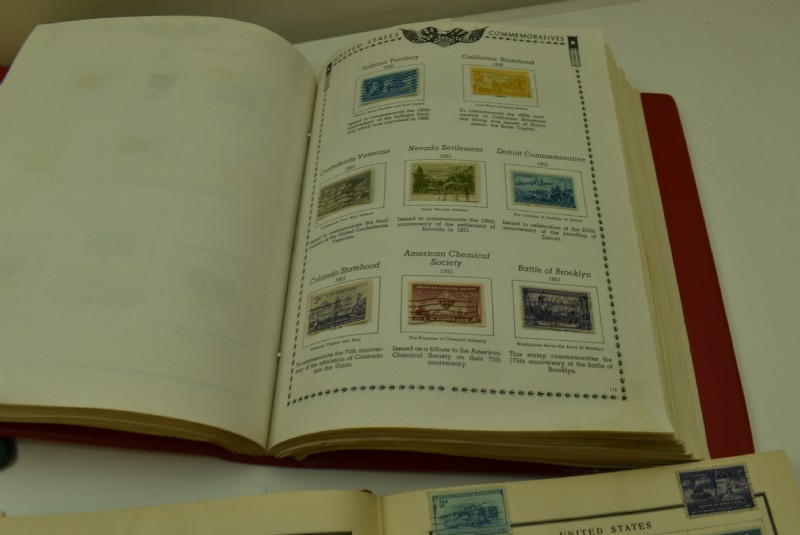




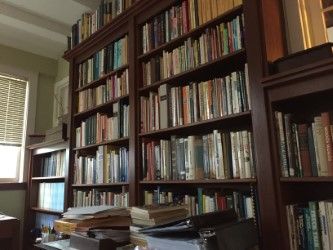








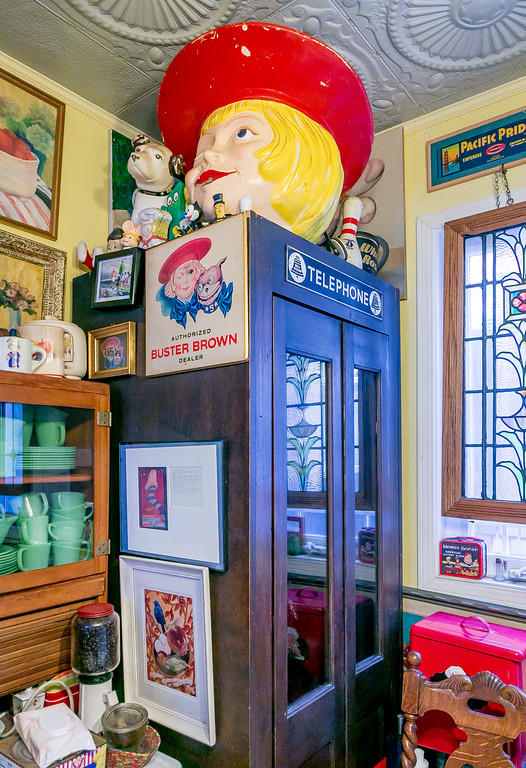

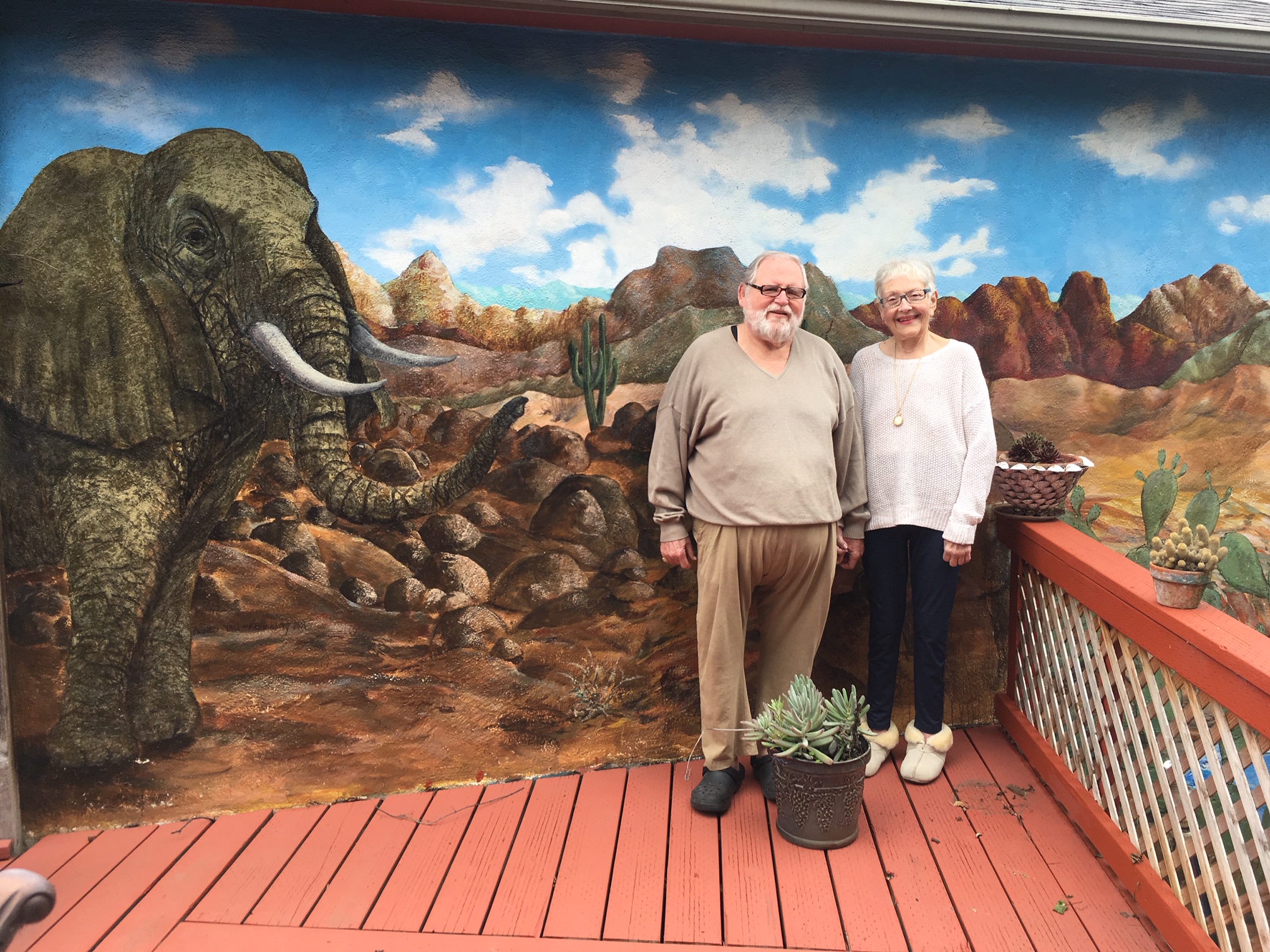





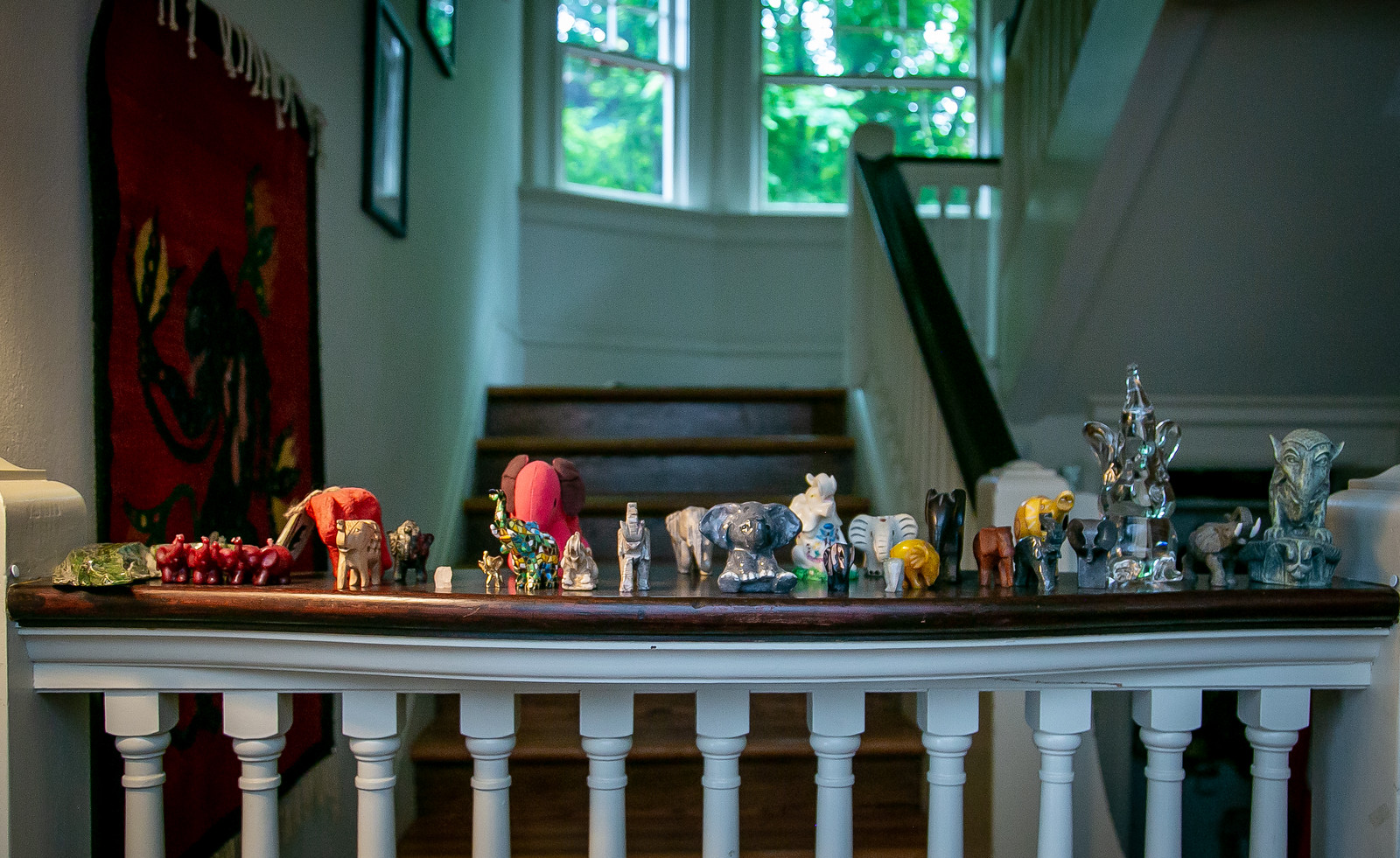


























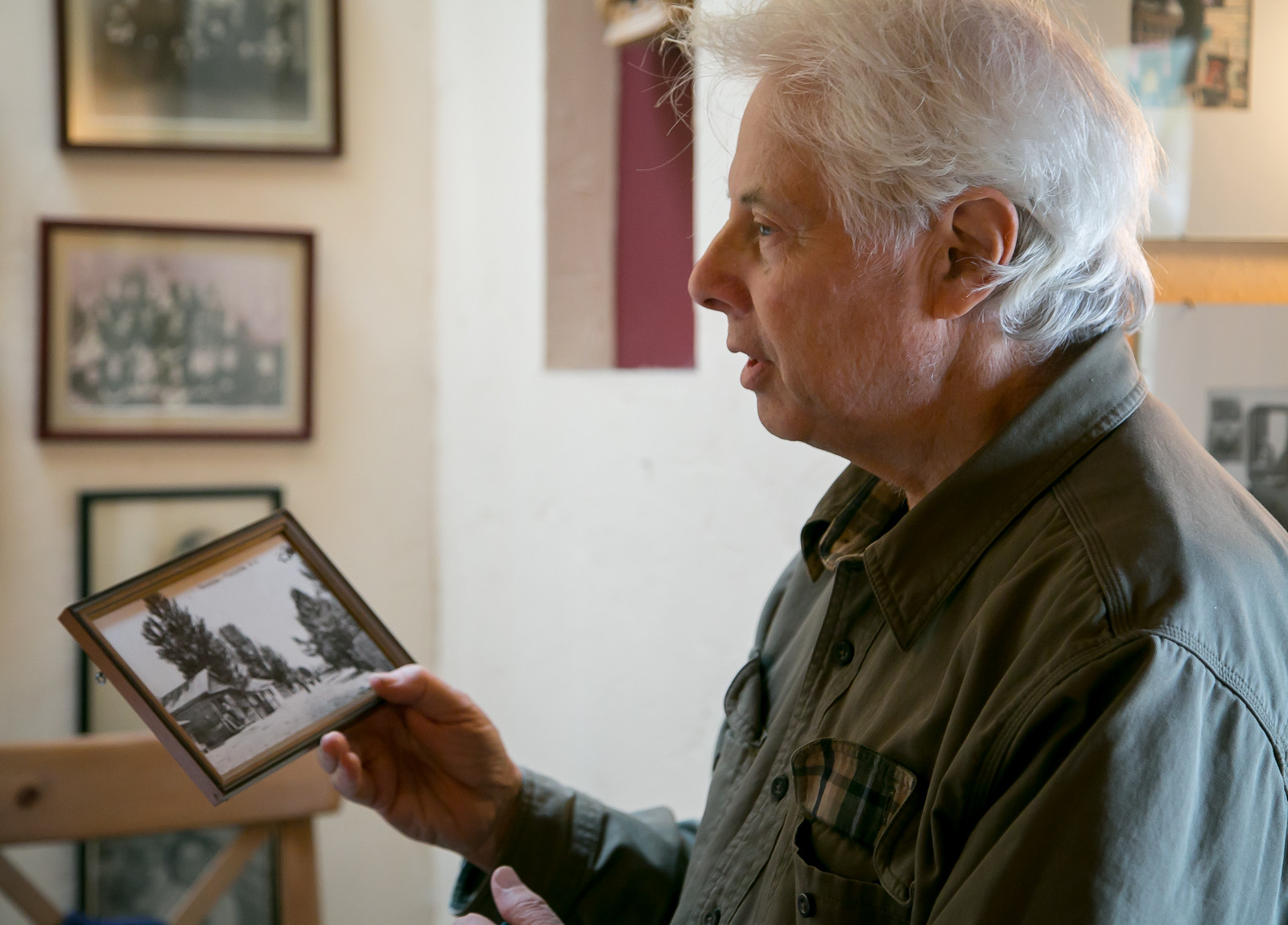





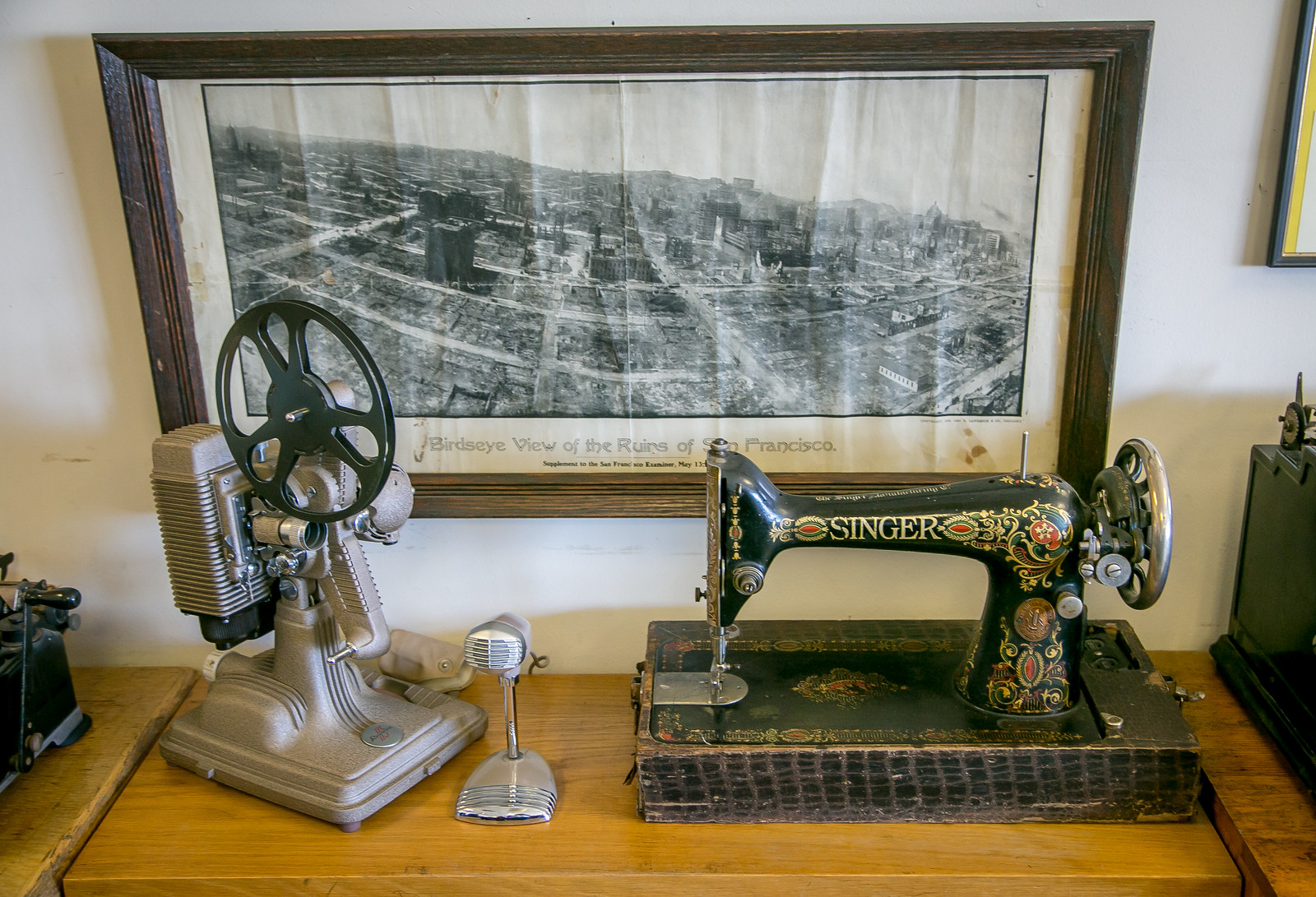




















I really enjoyed this excursion into quirky. Starting and running Urban Ore has allowed me to experience quirkiness in the most unexpected places. It’s good to see what others who allow themselves to collect and curate have created.
The piece about Robert Crumb was excellent and stirred up a lot of dusty reminders of visits to quirky Berkeley and back to quirky Eugene, Oregon over a twenty year period before I moved here for the next four decades of my life.